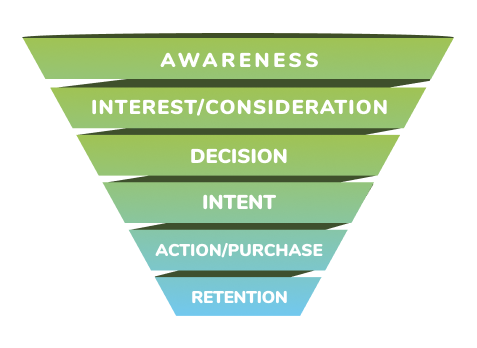Acquisition refers to bringing new customers and users to a website or a mobile application. It simply describes how you find new users and turn them into customers.
On the other hand, acquisition marketing describes the marketing method of targeting customers who are aware of your product or service and are in the phase of the purchasing decision.
1. User Acquisition: It is the process of gaining new users for a product, service, or platform. It involves strategic marketing efforts to attract individuals who may become customers or users. This multifaceted approach often includes targeted advertising, content marketing, social media campaigns, search engine optimization (SEO), and other tactics to reach and engage potential users. The goal of user acquisition is not only to increase the number of users but also to acquire individuals who align with the target audience and are likely to contribute positively to the growth and success of the business. As such, a well-executed user acquisition strategy is a fundamental component of sustainable business development in today’s competitive digital landscape.
2. Customer Acquisition: It is the key to business growth, encompassing the strategies and efforts employed to attract and convert potential customers into active, paying clients. This dynamic process involves a range of marketing techniques, including targeted advertising, content marketing, social media outreach, and search engine optimization. The goal isn’t just getting lots of customers. It’s about finding people who like what the company offers and will stick around as loyal customers. Effective customer acquisition strategies go beyond initial transactions, aiming to build lasting relationships and foster customer loyalty. In essence, a well-executed customer acquisition plan is essential for businesses aiming to expand their reach, increase revenue, and thrive in a competitive market.
For example, opening an account on an e-commerce site is user acquisition, whereas purchasing an item from the e-commerce site is customer acquisition.
It is the set of strategies businesses employ to draw in, captivate, and convert new customers. This includes both paid promotions and organic marketing efforts. Having an acquisition marketing plan is important for businesses to reach out to potential customers and guide them through the customer acquisition process.
It focuses on creating awareness, generating interest, and ultimately persuading individuals to make their first purchase or engage with a product or service. The primary goal of acquisition marketing is to efficiently and effectively expand the customer base by reaching and convincing individuals who have not interacted with the brand before. It involves understanding the target audience, identifying the most impactful channels, and optimizing the customer journey to maximize conversion rates.
The customer acquisition funnel is a step-by-step process that businesses use to turn potential customers into paying ones. It typically involves stages like awareness, interest/consideration, decision, intent, action/purchase, and retention reflecting the customer’s journey from discovering a product or service to making a purchase. Effectively navigating and optimizing this funnel is essential for businesses aiming to enhance their conversion rates and overall success.

The customer acquisition funnel typically consists of several stages, each representing a crucial step in the journey from a potential customer’s awareness of a product or service to their eventual conversion into a paying customer.
1. Awareness: This is the initial stage where customers become aware of your brand, product, or service. It often starts with marketing efforts such as advertisements, social media posts, or content marketing. The goal is to capture the attention of your target audience.
2. Interest/Consideration: After becoming aware, potential customers move to the consideration stage. Here, they show interest in your offerings and seek more information. This could involve exploring your website, reading reviews, or comparing your product with others in the market.
3. Decision: In the decision stage, customers are ready to make a choice. They’ve weighed the options, compared features, and are now deciding whether to make a purchase. This is a critical stage where factors like pricing, reviews, and incentives play a significant role in their decision-making process.
4. Action/Purchase: The final stage is where the potential customer takes the desired action, which could be making a purchase, signing up for a service, or any other conversion goal. This stage marks the successful transition from a potential lead to a paying customer.
5. Retention: Some models include a retention stage, emphasizing the importance of keeping customers engaged and satisfied even after the initial purchase. This involves strategies to encourage repeat business, loyalty programs, and ongoing customer support.
To acquire new customers, marketers use a combination of multiple marketing channels. Some examples of Customer Acquisition Strategies include:
1. ASO (App Store Optimization)
2. SEO (Search Engine Optimization)
3. Content Marketing (Blog Posts, Articles, Webinars, E-books, Guides, Infographics, etc.)
4. Traditional Media (TV, Radio, Billboard, Print)
5. Social Media Paid Ads and Posts
6. Influencer Marketing, PR Marketing
7. Email Marketing
8. Referral Marketing
Subscribe to our newsletter
© 2024 — Netmera. All Rights Reserved. | Privacy Policy | Cookie Policy (EU) | GDPR | KVKK